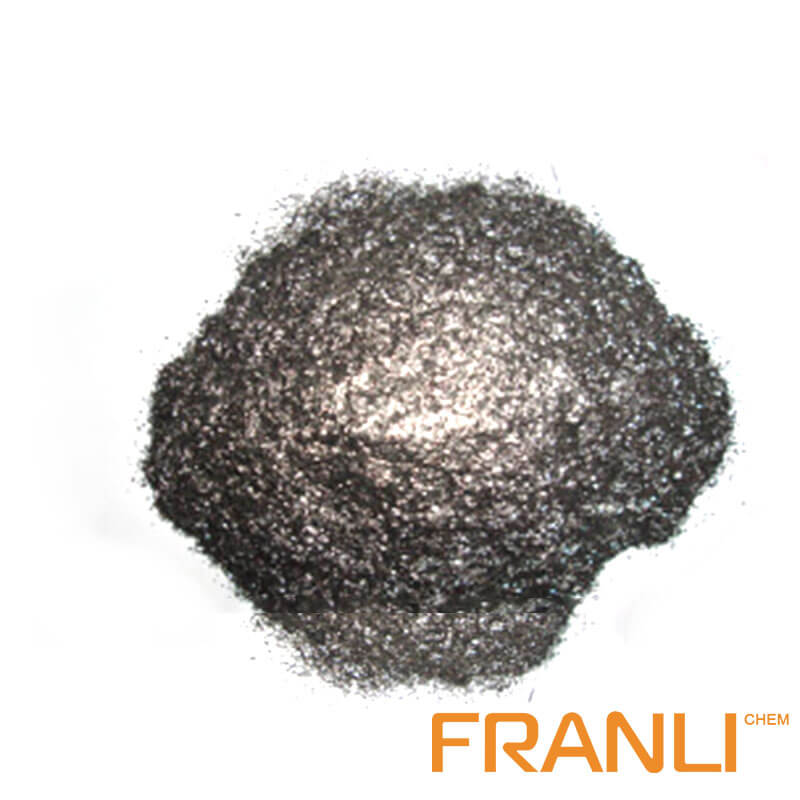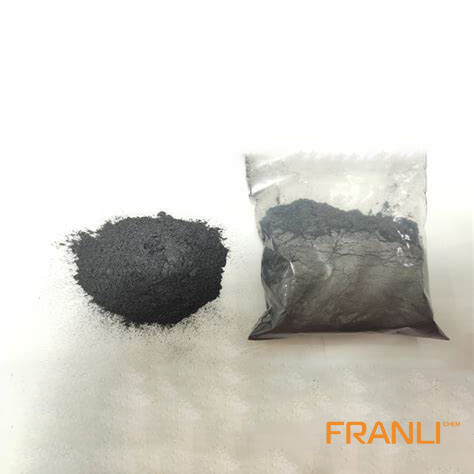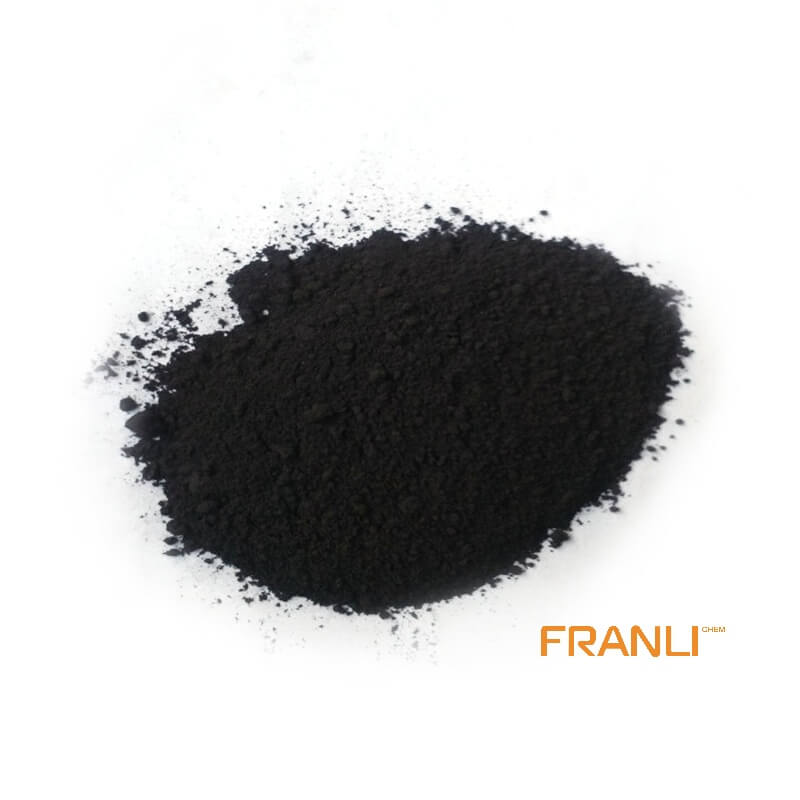


Flake Graphite
Size
0.01mm
Carbon Content
99%min
Package
25kg small bags into ton bags
Origin
China
Features
thermal shock resistance, lubricity, conductivity and plasticity…
Application
Lead battery plates positive and negative conductive agent, lithium batteries nickel hydrogen etc
Natural flake graphite has superior physical and chemical properties and is widely used in metallurgy, coatings and refractory industries. It is an important non-metallic raw material that is indispensable for today’s high-tech. Flake graphite is divided into large flake graphite and fine flake graphite according to the size of its scales. Usually, large flakes refer to +32 mesh, +50 mesh, +80 mesh, and +100 mesh flake graphite.
Request a quoteType A graphite is flake graphite with uniform and non-directional distribution. This is the most common graphite distribution form in ordinary gray cast iron. Type A graphite is generally considered to be the most beneficial for performance.
A-type graphite is formed when the graphite nucleation ability of cast iron is strong, the cooling rate is low, and the eutectic transformation occurs under the condition of small undercooling. It requires the original molten iron to have sufficient carbon equivalent, sulfur content, and suitable inoculation amount. Under the condition that there is no chilling or the wall thickness is too small, and the casting is completed in the shortest possible time after inoculation, the casting is most likely to form A-type graphite. At this time, the best graphite morphology will be obtained if the ratio of carbon equivalent to 4.26% of the finished product is equal to or approximately equal to 0.9.

B-type graphite is chrysanthemum-like graphite with uniform and non-directional distribution. It is formed when the degree of supercooling is large at the beginning of solidification, the nucleation conditions are poor, and the degree of supercooling is reduced in the later stage. The graphite is distributed in clusters, the central graphite flakes are relatively small and the edge graphite flakes are relatively coarse, with an obvious frontal chrysanthemum shape. Due to the clustering of graphite, concentrated weak spots are formed on the matrix, and the strength is decreased compared to A-type graphite.
The nucleation conditions of B-type graphite are worse than that of A-type graphite, and the degree of undercooling during eutectic transformation is also greater than that of A-type graphite. During crystallization, supercooled graphite (D-type) is first generated in the center of the eutectic group, and the released latent heat of crystallization reduces the degree of supercooling in the periphery to form A-type graphite, resulting in the appearance of chrysanthemum-like flake graphite.
C-type graphite is flaky primary graphite with uniform and non-directional distribution, which is formed when gray cast iron with hypereutectic composition is slowly cooled. It is characterized by the distribution of very thick needle-like graphite in the A-type graphite. This structure is the most destructive to the matrix, so the performance is also the worst.

C-type graphite is mainly found in cast iron with high carbon equivalent (hyper eutectic composition) and slow cooling. When the hypereutectic molten iron is cooled, after passing through the liquidus line, primary graphite is precipitated under a certain degree of supercooling, and gradually grows up in the liquid phase. Due to the higher crystallization temperature, the growth time of the graphite flakes is longer, resulting in the formation of coarse flake graphite with fewer branches. When the temperature drops to the eutectic temperature, normal eutectic transformation occurs, and the graphite produced at this time is normal eutectic graphite (that is, A-type graphite). Crystal graphite. Therefore, C-type graphite is composed of coarse, bulk graphite, and A-type graphite. In addition, although the carbon equivalent is not too high, this graphite will also be produced when the pouring temperature is high, the cooling rate is slow and the inoculation is excessive.
D-type graphite is interdendritic graphite with a non-directional distribution. This graphite is very fine and disorderly distributed among the dendrites. In recent years, new research has proposed that D-type graphite cast iron has unique applications in some fields, which needs further research.
D-type graphite is a cast iron with low carbon equivalent and high cooling rate. It is formed between austenite dendrites under the conditions of large undercooling and developed primary austenite dendrites. The graphite flakes are small and non-directional. sex. D-type graphite is commonly found in thin-walled gray iron castings with low carbon equivalents, and is also known as “supercooled graphite” or “interdendritic graphite”.
E-type graphite is interdendritic graphite with directional distribution, which is formed under the condition of lower carbon equivalent but slower cooling rate. Due to the strong directionality of the graphite arrangement, under the action of a small external force, the casting may be brittle in a band along the direction of the E-type graphite arrangement, and the strength is poor.

E-type graphite is formed at lower carbon equivalents and lower cooling rates. Due to more primary austenite dendrites, less undercooling when eutectic transformation occurs, not too many graphite cores, and larger eutectic clusters, the formed graphite flakes are larger than D-type graphite. Because the cooling is relatively slow, the austenite dendrites are developed, and the liquid phase is mainly between the primary austenite dendrites when the eutectic transformation occurs, and the formed graphite sheets grow along the dendrite direction and have a certain directionality. Cast iron with E-type graphite will also form D-type graphite if the cooling rate is high.
F-type graphite is a large piece of graphite with many small A-type graphites, also known as star-shaped graphite, which is formed under the condition of hyper eutectic composition but rapid cooling. The role of F-type graphite is similar to that of C-type graphite.
F-type graphite is essentially hyper eutectic graphite, which is formed by high-carbon molten iron and under relatively large supercooling conditions. Similar to C-type graphite in terms of composition conditions, it is characterized by the distribution of many small graphite flakes on large pieces of graphite (also called star-shaped graphite). The bulk graphite can be considered to be equivalent to the primary graphite in the C-type graphite, on which the flake graphite grows.



